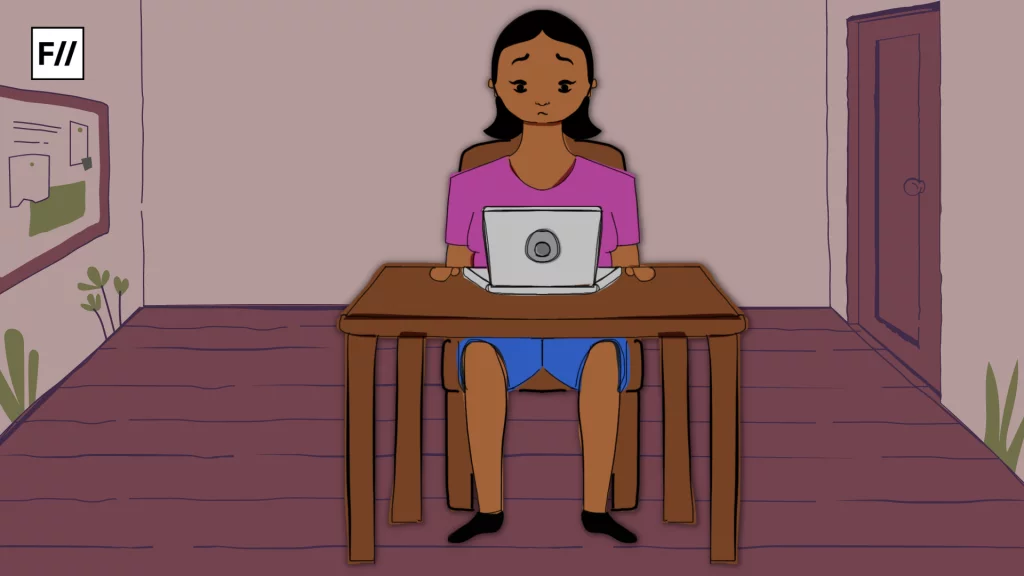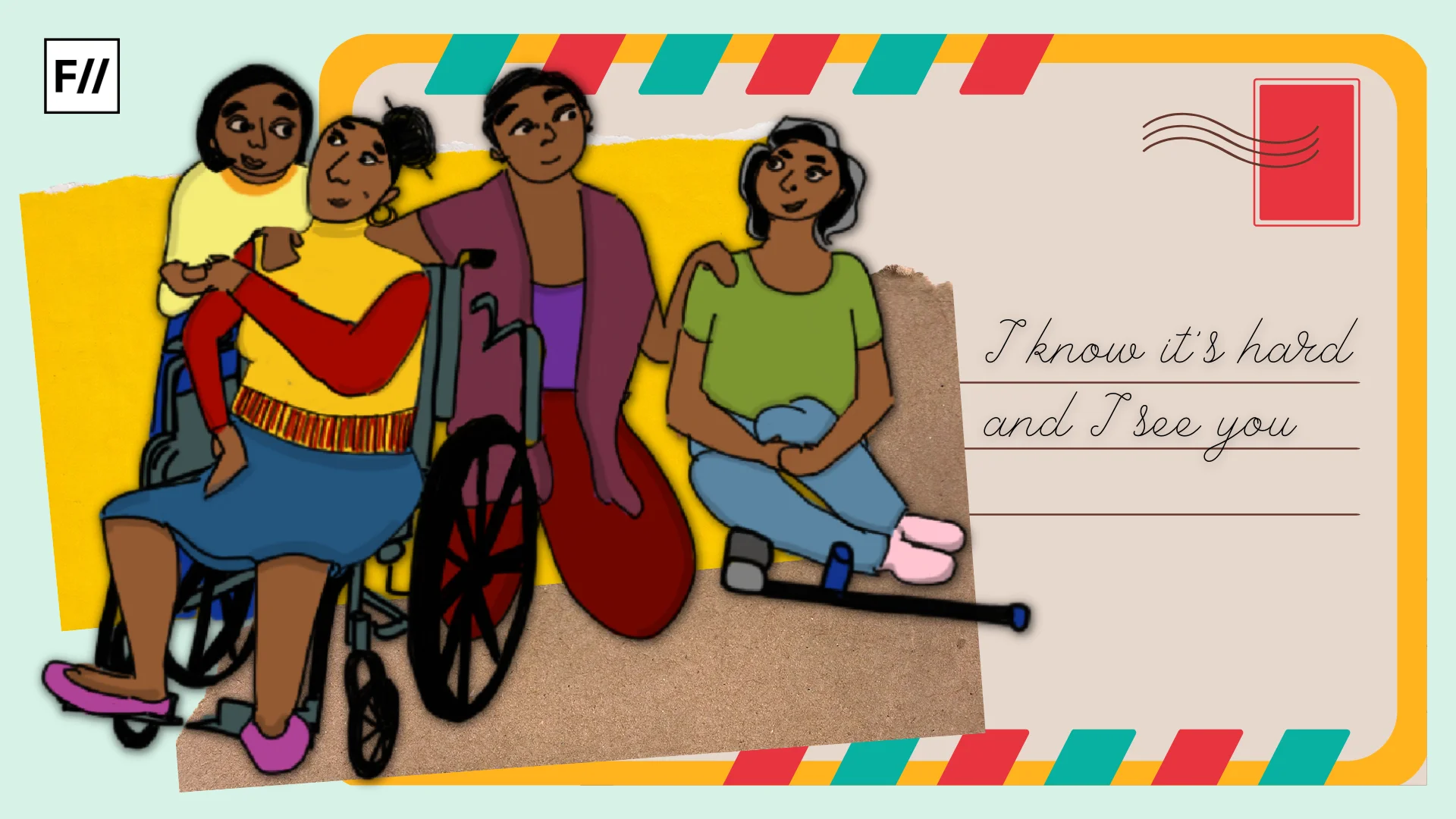‘Not men? Will men work all five days?’ That’s what a friend had asked when quizzed on how a 4-day workweek would benefit Indian women if it became a reality. Her question seemed to have many undertones. How dare you bring in gender here? You’re stuck in the age-old work-relationship dynamics. Women and men work the same hours and shoulder the household burden equally now. Then, why should only women benefit from a shortened workweek and the chance at a better work-life balance? What about men? Don’t they deserve rest as well?
Women globally spend three times more time on unpaid domestic work than men. In India, that number increases by tenfold.
However, research shows they don’t share the same workload. Women globally spend three times more time on unpaid domestic work than men. In India, that number increases by tenfold. The 2018 survey by the 4-Day Week Campaign showed that men with a 4-day workweek do spend 22% more time on childcare and 23% more time on housework, taking a little off women’s plates. But the disproportionate amount of time women continue to spend on the domestic front is a big reason they find it difficult to juggle home and work, feeling more stressed than men.
In a recent survey titled ‘Emotional Wellness State of Employees’ by YourDost, one of India’s leading mental health and emotional wellness companies, 5,000 working professionals across various industries offered startling insights into their work lives. Nearly three-quarters of women (72.2%) reported high stress levels in contrast to 53.64% of men. The competing demands at home and work negatively impacted the emotional health of 20 percent of women compared to just 9 percent of men, with 18 percent of women saying they struggle to hit a work-life balance.

Aimed at studying if the wellness programs offered by corporations truly served their employees, the survey is remarkable for its damaging revelations. Nearly 64.42% of workers aged between 21 and 30 report high levels of stress, a shocking 31% increase in employees experiencing high to extreme stress levels compared to last year. Dr. Jini Gopinath, Chief Psychology Officer at YourDost, identified ‘the shift in workplace dynamics and the evolution of remote and hybrid work models’ as the major culprits behind the dramatic increase in employee stress levels.
When women were asked about the chief stressors in their lives, no work-life balance, followed by lack of recognition, low morale, and constant fear of judgment came out on the top of the list.
What men don’t get about the gender stress gap
Infamous as the “silent killer,” stress can cause mental health challenges, cardiovascular diseases, eating disorders, menstrual issues, and skin and hair problems, among others. It can also alter the body’s neurochemical makeup which, according to the San Francisco Spine Pain Relief Centre, can affect the maturation and release of the human egg. By causing the fallopian tubes and uterus to spasm, it can affect implantation and have negative pregnancy outcomes. In men, stress can lead to erectile dysfunction and lower sperm count and motility.
Though stress is bad for everyone, it hits women harder than men.
Though stress is bad for everyone, it hits women harder than men. They report higher levels of stress-related physical and emotional symptoms like headache, sadness, upset stomach, irritability, and fatigue. A study by the University of California, San Francisco, revealed stress also puts women at a higher risk of chronic diseases like type 2 diabetes and anxiety disorders. And part of the reason lies in how the genders experience stressful events. Using fMRI to gauze brain activity, researchers at the Yale School of Medicine discovered action and planning-oriented parts of men’s brains were actively engaged while imagining a personalised, highly stressful event. Whereas the limbic areas of women’s brains, associated with emotions and memories, were active and busy visualising and emotionally processing the experience.
In the second part of the study, when men and women experienced intense anxiety, the brain regions that were active in men were inactive in women who got caught up in processing their stress, ‘turning it over and over in their minds,’ says Rajita Sinha, PhD, Director of the Yale Stress Center. Exposed to stressors, women’s brains mull over them and are unable to let go, which strengthens the brain circuits of those negative feelings that further feed into the stress.

Describing our different approaches to stress management, Sinha continued:
‘Women cope by talking about being anxious and describing their emotions and stressors. This could put them at risk of ruminating about the issues. Men seem not to access that cognitive-processing part of their brains and are more likely to quickly think about doing something, taking an action, as opposed to expressing their distress verbally. It’s just the difference in the way we’re wired.’
The need for reform in the workplace for women
YourDost’s ‘Emotional Wellness State of Employees’ survey shows the need for a holistic employee support program catering to the career counseling, mental health, and personal growth and development of young professionals in India, adjustable for women’s needs at work. Post-covid, workplace flexibility has become the norm across multiple industries. Yet, despite progress, it remains less accessible or stigmatised for women who face unique challenges.
As Ally Nathaniel, owner of Soul Staffing Solutions, told Newsweek, ‘Unfortunately, the workplace wasn’t exactly designed with women’s needs in mind. It was built by men, for men, and still largely operates under those same standards, which don’t always align with what women require.’ The visibility bias at work lowers their visibility in certain roles and societal expectations undervalue their contributions, which leads to higher career dissatisfaction and makes it harder for them to enjoy work-life balance, despite outranking men in achievements.
‘Unfortunately, the workplace wasn’t exactly designed with women’s needs in mind. It was built by men, for men, and still largely operates under those same standards, which don’t always align with what women require.’
Ally Nathaniel, Soul Staffing Solutions.
‘Today’s work systems still rely on the “old” ways of doing things,’ they continued and that includes women being left out of important boardroom meetings while being expected to work harder and longer to “prove” themselves for every opportunity. There continues to be an ‘imbalance in leadership position, where men tend to dominate, creating this metaphorical glass ceiling that women struggle to break through.’
Nathaniel reminds us, ‘Without flexible work arrangements, such as remote options, it can leave women feeling undervalued and unheard.’ For all the progress we’ve made over the years, there’s still a ‘disconnect between the belief in equal opportunities and the actual reality of workplace dynamics, which are influenced by traditional gender norms.’

To actually show their commitment to diversity and inclusion, corporations need to step up and address the challenges facing women and other marginalised groups. Offering generous parental leave policies and updating childcare support structures is one way to create a more diverse and inclusive workplace since as Nathaniel stresses, ‘It’s not just about individual discontent. It’s a system of broader issues rooted in systemic mistreatment and unrealistic societal expectations. Companies that genuinely care about diversity and inclusion need to rethink their benefits and perks to better support women.’
Another way companies can support women is by bridging the pay gap. Women professionals in India earn only Rs.85 for Rs.100 than men in the same position. When companies refuse to pay women on par with men, they ignore the ‘unique challenges and biases women face in their careers,’ as Brian Driscoll, an HR Consultant, told Newsweek. ‘Have we made progress? Sure. But it’s not nearly enough.’ As a society, we are failing women in the workplace. And lest we dismiss it as another one of “women’s issues”, Driscoll is quick to point out, ‘This is a business issue and more broadly, a societal issue. Despite progress, we are still far from achieving true equality in the workplace.’
About the author(s)
Kirti writes on gender for FII. She's available at reachkirtigoyal@gmail.com




